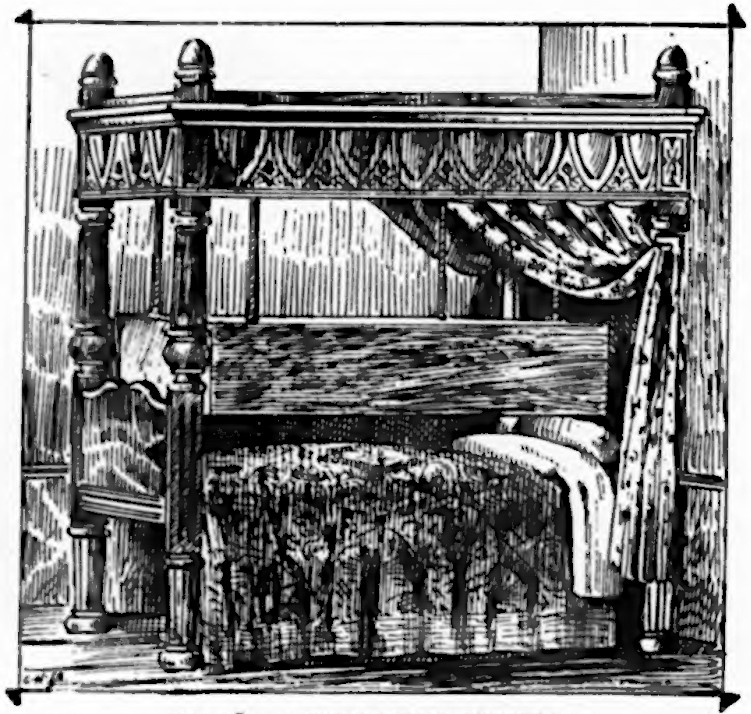
In an 1894 feature on peculiar furniture, the Strand describes a “suffocating bedstead” used to dispatch unwitting inn guests in the days of coach travel:
Nothing whatever of a suspicious character revealed itself to the eye of the wayfarer, yet when the scoundrel who meditated crime had satisfied himself that the man slept, he would quickly lower an interior portion of the canopy of the bedstead, firmly imprisoning him in an air-tight cavity until suffocation ensued. Struggling and shouting would be useless under such circumstances, as the weight of the box would be tremendous.
This recalls Wilkie Collins’ 1852 story “A Terribly Strange Bed,” in which a visitor at a Paris gambling house realizes the canopy over his bed is moving:
It descended — the whole canopy, with the fringe round it, came down — down — close down; so close that there was not room now to squeeze my finger between the bed-top and the bed. I felt at the sides, and discovered that what had appeared to me from beneath to be the ordinary light canopy of a four-post bed was in reality a thick, broad mattress, the substance of which was concealed by the valance and its fringe. I looked up and saw the four posts rising hideously bare. In the middle of the bed-top was a huge wooden screw that had evidently worked it down through a hole in the ceiling, just as ordinary presses are worked down on the substance selected for compression.
In his preface to the collection in which that story appears, Collins claims that it’s “entirely of my own imagining, constructing, and writing” but credits painter W.S. Herrick for “the curious and interesting facts” on which it’s based. The Strand article, published 40 years later, doesn’t mention Collins, but perhaps the idea had entered English folklore by that point. Or maybe it’s true!
